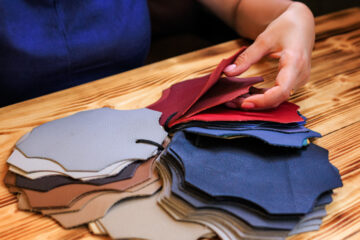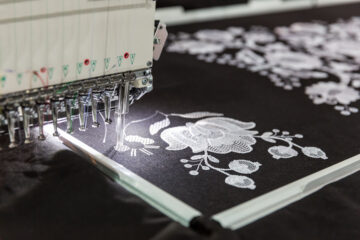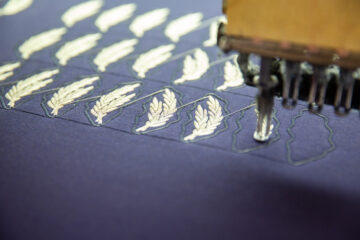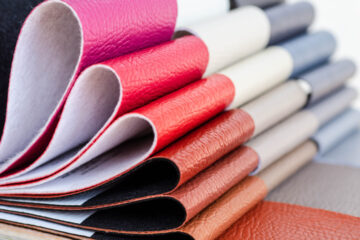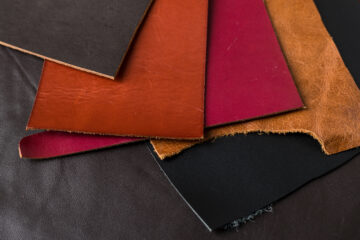Choosing the Right Leather for Small Leather Goods: A Comprehensive Guide
Small leather goods like wallets, watch straps, and small bags are timeless pieces that can last a lifetime. Withstanding the day’s trends, these pieces are intended to be used and loved for years. Behind every exceptional small leather good is a carefully chosen piece of leather. The choice of leather can transform an ordinary item into a masterpiece, elevating it from mere functionality to a work of art. Let’s discover how to choose the right leather for small leather goods.
Understanding Leather Types
Leather comes in several types and qualities, each with its characteristics. At the pinnacle of quality stands full-grain leather. This type of leather is crafted from the top layer of the hide, complete with its natural grain and scars, creating a unique look that only improves with time.
Top-grain leather originates from the upper hide but is buffed or sanded to remove imperfections, offering a more uniform look while retaining some natural grain.
The third tier of quality leather is called genuine leather. This term can often be misleading, often making people think it just means “real leather.” In reality, genuine leather is made from layers beneath full-grain and top-grain layers.
High-quality leather products are typically made from one of these three types of leather, but there are other leather options, such as bonded leather, suede, and vegan leather.
Factors Influencing Leather Quality
The quality of leather can vary greatly depending on various factors and influences. Understanding these factors is essential when evaluating or choosing leather for various purposes. Beyond the quality differences between the different types of leather, one factor that can affect quality is the type of animal from which the leather is sourced. Common sources include cows, goats, sheep, pigs, and exotic animals like alligators and ostriches. Each animal’s hide has different characteristics, leading to products that look and feel different.
The tanning process can also influence the quality of a finished leather product. Several tanning methods include vegetable tanning, chrome tanning, and combination tanning. The different processes affect the leather’s color, texture, and durability. The highest quality leather will often retain natural markings that the animal had during their life, but quality leather should always have consistency in color and texture. Understanding these factors allows designers to distinguish between high-quality and low-quality leather.
Considerations for Small Leather Goods
Choosing the right leather for a small leather good, such as a wallet, cardholder, keychain, or belt, requires careful consideration of several factors to ensure you get a product that suits your needs and preferences. Here are some key considerations to keep in mind:
Intended Use
When designing a small leather good, remember your audience and their lifestyle. If you’re designing a keychain for hikers, you may want to select a leather that will be more weather-resistant. Additionally, keep in mind the product itself. A leather bag may be better suited for a softer leather than a belt.
Durability
Different types of leather have different levels of durability, and some products may need more durable leather than others. Top-grain and full-grain leather tend to be the most durable, and thicker leather is also more durable.
Aesthetics
When choosing leather for a small good like a wallet, it is important to keep in mind the aesthetics of the product and your brand. Some leather has natural markings that give it a more worn, lived-in look, while others are more uniform in appearance. Both options can fit into a variety of aesthetics to suit your brand’s needs.
Color
Leather comes in a variety of colors, and you should select one that complements your brand’s style and preferences. Ensure that the color is consistent throughout the leather.
Texture
The texture of leather can greatly impact the look and feel of your small leather goods. Leather comes in a variety of textures to fit many different looks.
Finish
Choose a leather finish that suits your design. Aniline finishes retain the natural texture but offer less protection. Semi-aniline and pigmented finishes provide more protection but may alter the leather’s appearance. The finish will also impact the level of care and maintenance required to keep the leather looking nice for years to come.
By considering these factors, you can make an informed choice when selecting leather for your small leather goods, ensuring they not only meet your functional needs but also align with your style and values.
Your Partner in Choosing the Right Leather
Are you ready to take the next step in sourcing premium leather for your small leather goods? Look no further than Softline Brand Partners, a trusted leader in soft goods manufacturing. With a legacy built on quality and trust, Softline Brand Partners offers the flexibility and scalability you need, whether you’re a startup or a Fortune 500 company. We are your trusted partner in crafting exceptional small leather goods. Contact us today to discuss your project and experience the difference quality and expertise make.
